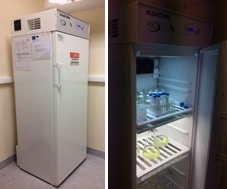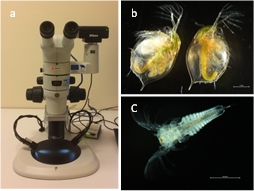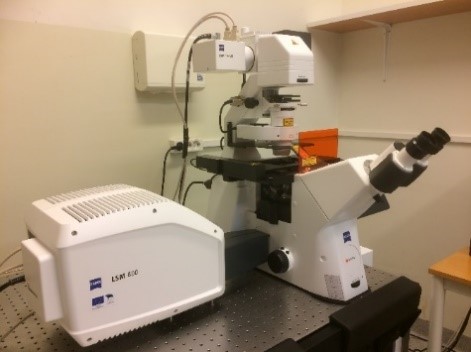Eesti teaduse teekaardi objekt NAMUR+
Nanosafety services
A comprehensive nanosafety infrastructure is being established by combining the existing competence and equipment in the Laboratory of Environmental Toxicology at the National Institute of Chemical Physics and Biophysics with investments in the framework of the Roadmap object NAMUR+. This will enable discovery of new uses of (nano)materials in biology/medicine as well as characterisation of their safety for the manufacturer, consumer and the environment, providing information that will secure the sustainability of nanotechnologies.
Three complexes will be acquired within NAMUR+:
- Complex for (nano)ecotoxicological studies: thermostatic climate chamber with shaking and illumination Algaetron AG230 for environmental safety testing and stereo microscope Nikon SMZ1270 for the visualisation of test organisms.


Thermostatic climate chamber with shaking and illumination Algaetron AG230 (left); Stereo microscope Nikon SMZ1270 (a) and the images of Daphnia magna (b) and Thamnocephalus platyurus (c) captured with the Nikon SMZ1270 (right).
Under NAMUR+ this complex offers services to study environmental safety of nanoparticles using standard assays with algae (Raphidocelis subcapitata growth inhibition test, OECD201), water fleas (Daphnia magna acute toxicity test, OECD202 and reproduction test, OECD211) and aquatic plants (Lemna sp. growth inhibition test, OECD221) that are relevant for the REACH regulation.
- Complex for In vitro nano-toxicological studies: bright field and phase contrast invert microscope with video camera for the visualisation of cell cultures as well as microplate washer for ELISA testing.

- Complex for nano-bio interaction studies: light, fluorescence and laser scanning confocal microscope for the study of interactions between nanoparticles and living cells.

Primary contact: Anne Kahru (anne.kahru@kbfi.ee)
Contacts for the tests: OECD201, Villem Aruoja (villem.aruoja@kbfi.ee); OECD202, OECD210 and OECD211, Irina Blinova (irina.blinova@kbfi.ee).
Estonian Research Infrastructures Roadmap object „Center of nanomaterials technologies and research (NAMUR+)” is co-fundeded by European Regional Development Fund (projects „Nanomaterials – research and applications“, 3.2.0304.12-0397, 01.02.2012-31.12.2015 and „Center of nanomaterials technologies and research”, 2014-2020.4.01.16-0123, 01.01.2017-30.06.2022).


